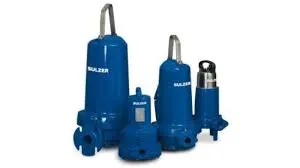English
- Afrikaans
- Albanian
- Amharic
- Arabic
- Armenian
- Azerbaijani
- Basque
- Belarusian
- Bengali
- Bosnian
- Bulgarian
- Catalan
- Cebuano
- Corsican
- Croatian
- Czech
- Danish
- Dutch
- English
- Esperanto
- Estonian
- Finnish
- French
- Frisian
- Galician
- Georgian
- German
- Greek
- Gujarati
- Haitian Creole
- hausa
- hawaiian
- Hebrew
- Hindi
- Miao
- Hungarian
- Icelandic
- igbo
- Indonesian
- irish
- Italian
- Japanese
- Javanese
- Kannada
- kazakh
- Khmer
- Rwandese
- Korean
- Kurdish
- Kyrgyz
- Lao
- Latin
- Latvian
- Lithuanian
- Luxembourgish
- Macedonian
- Malgashi
- Malay
- Malayalam
- Maltese
- Maori
- Marathi
- Mongolian
- Myanmar
- Nepali
- Norwegian
- Norwegian
- Occitan
- Pashto
- Persian
- Polish
- Portuguese
- Punjabi
- Romanian
- Russian
- Samoan
- Scottish Gaelic
- Serbian
- Sesotho
- Shona
- Sindhi
- Sinhala
- Slovak
- Slovenian
- Somali
- Spanish
- Sundanese
- Swahili
- Swedish
- Tagalog
- Tajik
- Tamil
- Tatar
- Telugu
- Thai
- Turkish
- Turkmen
- Ukrainian
- Urdu
- Uighur
- Uzbek
- Vietnamese
- Welsh
- Bantu
- Yiddish
- Yoruba
- Zulu
Telephone: +86 13120555503
Email: frank@cypump.com
Dec . 04, 2024 16:59 Back to list
ejection pump
Understanding Ejection Pumps An Essential Component in Modern Pumping Systems
Ejection pumps play a crucial role in various industries, particularly in wastewater management and sewage treatment. These specialized pumps are designed to lift wastewater or sewage from lower to higher elevations, ensuring that waste can be efficiently transported to treatment facilities. This article explores the principles behind ejection pumps, their applications, and the advantages they bring to modern pumping systems.
What is an Ejection Pump?
An ejection pump, often referred to as a sewage ejector pump, operates on a simple yet effective principle known as the ejector system. This type of pump consists of a motor-driven impeller that creates a difference in pressure. When the impeller spins, it generates a vacuum that draws wastewater into the pump. Once the wastewater reaches a certain level, the pump activates and expels the contents through a discharge pipe to a higher elevation or into a municipal sewer system.
How Ejection Pumps Work
The mechanism of ejection pumps is centered around fluid dynamics. As the pump impeller rotates, it creates centrifugal force, which pushes the water toward the discharge outlet. Simultaneously, the reduction in pressure at the inlet draws more wastewater into the chamber. This action continues until the pump reaches a predetermined level, at which point it activates a switch to start expelling the wastewater. They are often equipped with a float switch, ensuring that the pump only operates when necessary, which helps conserve energy.
Applications of Ejection Pumps
Ejection pumps are utilized in a wide range of settings
1. Residential Areas In homes that are located below the level of the municipal sewer line, ejection pumps are necessary to lift sewage and wastewater to the appropriate elevation. This is particularly common in basements or lower-level bathrooms.
2. Commercial Buildings Restaurants, hotels, and other commercial facilities often require ejection pumps to manage wastewater effectively. This ensures that sewage is transported quickly to municipal systems, preventing backups and unpleasant odors.
ejection pump

3. Industrial Use In many industries, ejection pumps are used to manage wastewater produced during manufacturing processes. They are particularly important in industries such as food processing, pharmaceuticals, and chemical manufacturing.
4. Municipal Systems Ejection pumps are also integral to municipal wastewater treatment plants, where they help transport sewage from various areas to treatment facilities for processing.
Advantages of Ejection Pumps
The use of ejection pumps comes with several advantages
- Efficient Waste Management Ejection pumps provide an effective means of transporting sewage, thereby reducing the risk of system backups and flooding.
- Space-Saving Design These pumps can be installed in compact spaces, making them ideal for homes and businesses with limited room for large pumping systems.
- Energy Efficiency Modern ejection pumps are designed to be energy-efficient, operating only when needed, which reduces energy consumption and lowers costs.
- Durability Constructed from robust materials, ejection pumps are built to withstand harsh operating environments, ensuring reliability and longevity.
Conclusion
Ejection pumps are an indispensable component of modern wastewater management systems. Their ability to efficiently lift and transport sewage plays a vital role in maintaining sanitary conditions in homes, businesses, and industrial settings. As technology advances, ejection pumps continue to evolve, becoming more efficient and environmentally friendly, making them a key player in sustainable waste management solutions. Understanding their function and importance not only helps in proper installation and maintenance but also underscores their significance in everyday life.
-
ISG Series Vertical Pipeline Pump - Chi Yuan Pumps Co., LTD.
NewsJul.30,2025
-
ISG Series Vertical Pipeline Pump - Chi Yuan Pumps Co., LTD.|energy-efficient fluid handling&industrial durability
NewsJul.30,2025
-
ISG Series Vertical Pipeline Pump - Chi Yuan Pumps | Advanced Engineering&Industrial Efficiency
NewsJul.30,2025
-
ISG Series Pipeline Pump - Chi Yuan Pumps | High Efficiency, Energy Saving
NewsJul.30,2025
-
ISG Series Vertical Pipeline Pump-Chi Yuan Pumps|High Efficiency&Reliable Performance
NewsJul.29,2025
-
ISG Series Vertical Pipeline Pump|High Efficiency&Low Noise
NewsJul.29,2025










